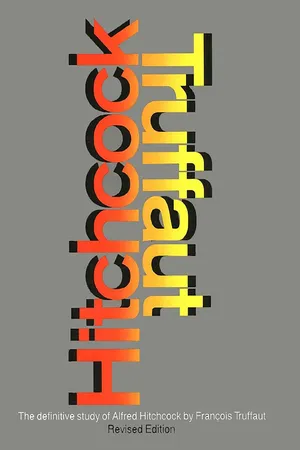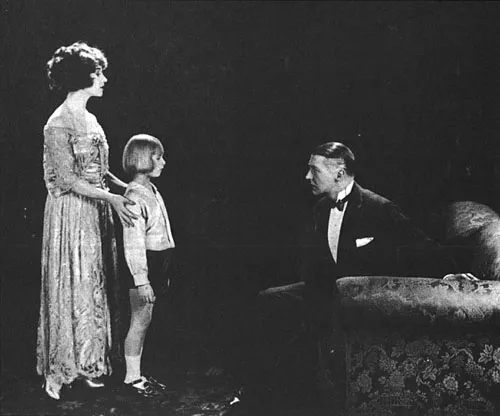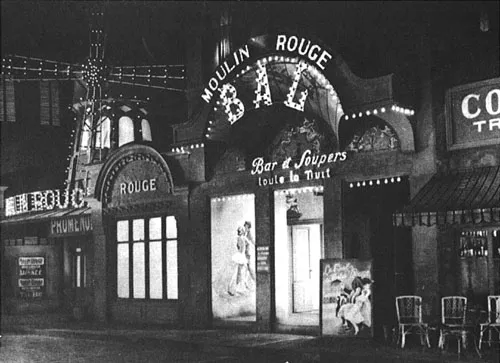![]()
![]()
CHILDHOOD ■ BEHIND PRISON BARS ■ “CAME THE DAWN” ■ MICHAEL BALCON ■ “WOMAN TO WOMAN” ■ “NUMBER THIRTEEN” ■ INTRODUCING THE FUTURE MRS. HITCHCOCK ■ A MELODRAMATIC SHOOTING: “THE PLEASURE GARDEN” ■ “THE MOUNTAIN EAGLE”
1
FRANÇOIS TRUFFAUT. Mr. Hitchcock, you were born in London on August 13, 1899. The only thing I know about your childhood is the incident at the police station. Is that a true story?
ALFRED HITCHCOCK. Yes, it is. I must have been about four or five years old. My father sent me to the police station with a note. The chief of police read it and locked me in a cell for five or ten minutes, saying, “This is what we do to naughty boys.”
F.T. Why were you being punished?
A.H. I haven’t the faintest idea. As a matter of fact, my father used to call me his “little lamb without a spot.” I truly cannot imagine what it was I did.
F.T. I’ve heard that your father was very strict.
A.H. Let’s just say he was a rather nervous man. What else can I tell you? Well, my family loved the theater. As I think back upon it, we must have been a rather eccentric little group. At any rate, I was what is known as a well-behaved child. At family gatherings I would sit quietly in a corner, saying nothing. I looked and observed a good deal. I’ve always been that way and still am. I was anything but expansive. I was a loner—can’t remember ever having had a playmate. I played by myself, inventing my own games.
I was put into school very young. At St. Ignatius College, a Jesuit school in London. Ours was a Catholic family and in England, you see, this in itself is an eccentricity. It was probably during this period with the Jesuits that a strong sense of fear developed—moral fear—the fear of being involved in anything evil. I always tried to avoid it. Why? Perhaps out of physical fear. I was terrified of physical punishment. In those days they used a cane made of very hard rubber. I believe the Jesuits still use it. It wasn’t done casually, you know; it was rather like the execution of a sentence. They would tell you to step in to see the father when classes were over. He would then solemnly inscribe your name in the register, together with the indication of the punishment to be inflicted, and you spent the whole day waiting for the sentence to be carried out.
F.T. I’ve read that you were rather average as a student and that your only strong point was geography.
A.H. I was usually among the four or five at the top of the class. Never first; second only once or twice, and generally fourth or fifth. They claimed I was rather absent-minded.
F.T. Wasn’t it your ambition, at the time, to become an engineer?
A.H. Well, little boys are always asked what they want to be when they grow up, and it must be said to my credit that I never wanted to be a policeman. When I said I’d like to become an engineer, my parents took me seriously and they sent me to a specialized school, the School of Engineering and Navigation, where I studied mechanics, electricity, acoustics, and navigation.
F.T. Then you had scientific leanings?
A.H. Perhaps. I did acquire some practical knowledge of engineering, the theory of the laws of force and motion, electricity—theoretical and applied. Then I had to make a living, so I went to work with the Henley Telegraph Company. At the same time I was taking courses at the University of London, studying art.
At Henley’s I specialized in electric cables. I became a technical estimator when I was about nineteen.
F.T. Were you interested in motion pictures at the time?
A.H. Yes, I had been for several years. I was very keen on pictures and the stage and very often went to first nights by myself. From the age of sixteen on I read film journals. Not fan or fun magazines, but always professional and trade papers. And since I was studying art at the University of London, Henley’s transferred me to the advertising department, where I was given a chance to draw.
F.T. What kind of drawings?
A.H. Designs for advertisements of electric cables. And this work was a first step toward cinema. It helped me to get into the field.
F.T. Can you remember specifically some of the films that appealed to you at the time?
A.H. Though I went to the theater very often, I preferred the movies and was more attracted to American films than to the British. I saw the pictures of Chaplin, Griffith, all the Paramount Famous Players pictures, Buster Keaton, Douglas Fairbanks, Mary Pickford, as well as the German films of Decla-Bioscop, the company that preceded UFA. Murnau worked for them.
F.T. Can you single out a picture that made a special impression?
A.H. One of Decla-Bioscop’s most famous pictures was Der müde Tod.
F.T. Wasn’t that directed by Fritz Lang? The British title, I believe, was Destiny.
A.H. I guess so. The leading man, I recall, was Bernhard Goetzke.
F.T. Did you like Murnau’s films?
A.H. Yes, but they came later. In ’23 or ’24.
F.T. What films were being shown in 1920?
A.H. Well, I remember a Monsieur Prince. In England it was called Whiffles.
F.T. You’ve often been quoted as having said: “Like all directors, I was influenced by Griffith.”
A.H. I especially remember Intolerance and The Birth of a Nation.
F.T. How did you happen to go from Henley’s to a film company?
A.H. I read in a trade paper that an American company, Paramount’s Famous Players-Lasky, was opening a branch in Islington, London. They were going to build studios there, and they announced a production schedule. Among others, a picture taken from such and such a book. I don’t remember the title. While still working at Henley’s, I read that book through and then made several drawings that might eventually serve to illustrate the titles.
F.T. By “titles” you mean the captions that covered the dialogue in silent pictures?
A.H. That’s right. At the time, those titles were illustrated. On each card you had the narrative title, the dialogue, and a small drawing. The most famous of these narrative titles was “Came the dawn.” You also had “The next morning . . .” For instance, if the line read: “George was leading a very fast life by this time,” I would draw a candle, with a flame at each end, just below the sentence. Very naïve.
F.T. So you took this initiative and then submitted your work to Famous Players?
A.H. Exactly. I showed them my drawings and they put me on at once. Later on I became head of the title department. I went to work for the editorial department of the studio. The head of the department had two American writers under him, and when a picture was finished, the head of the editorial department would write the titles or would rewrite those of the original script. Because in those days it was possible to completely alter the meaning of a script through the use of narrative titles and spoken titles.
F.T. How so?
A.H. Well, since the actor pretended to speak and the dialogue appeared on the screen right afterward, they could put whatever words they liked in his mouth. Many a bad picture was saved in this way. For instance, if a drama had been poorly filmed and was ridiculous, they would insert comedy titles all the way through and the picture was a great hit. Because, you see, it became a satire. One could really do anything—take the end of a picture and put it at the beginning—anything at all!
F.T. And this gave you a chance to see the inside of film-making?
A.H. Yes. At this time I met several American writers and I learned how to write scripts. And sometimes when an extra scene was needed—but not an acting scene—they would let me shoot it. However, the pictures made by Famous Players in England were unsuccessful in America. So the studio became a rental studio for British producers.
Meanwhile, I had read a novel in a magazine, and just as an exercise, I wrote a script based on this story. I knew that an American company had the exclusive world rights to the property, but I did it anyway, since it was merely for practice.
When the British companies took over the Islington studios, I approached them for work and I landed a job as an assistant director.
F.T. With Michael Balcon?
A.H. No, not yet. Before that I worked on a picture called Always Tell Your Wife, which featured Seymour Hicks, a very well-known London actor. One day he quarreled with the director and said to me, “Let’s you and me finish this thing by ourselves.” So I helped him and we completed the picture.
Meanwhile, the company formed by Michael Balcon became a tenant at the studios, and I became an assistant director for this new venture. It was the company that Balcon had set up with Victor Saville and John Freedman. They bought the rights to a play. It was called Woman to Woman. Then they said, “Now we need a script,” and I said, “I would like to write it.” “You? What have you done?”
I said, “I can show you something.” And I showed them the adaptation I’d written as an exercise. They were very impressed and I got the job. That was in 1922.
Betty Compson and Clive Brook in Woman to Woman.
Set created by Hitchcock for Woman to Woman.
F.T. I see. You were then twenty-three. But didn’t you direct a little picture called Number Thirteen before that time?
A.H. A two-reeler. It was never completed.
F.T. Wasn’t it a documentary?
A.H. No. There was a woman working at the studio who had worked with Chaplin. In those days anyone who had worked with Chaplin was top drawer: She had written...






